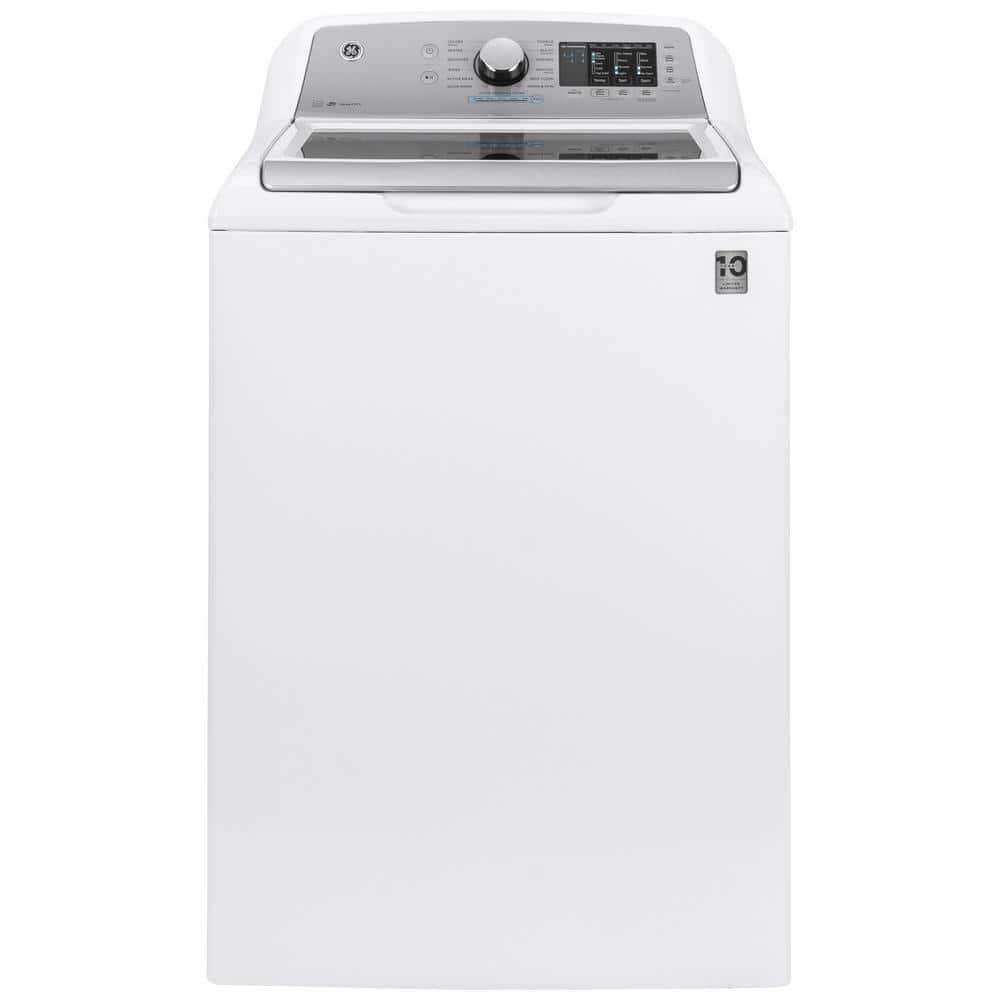GE 4.8 cu. ft. High-Efficiency White Top Load Washing Machine with FlexDispense and Sanitize with Oxi, ENERGY STAR
Innovative FlexDispense for optimized cleaning power. Stain removal guide targets the 5 most common stains every cycle. Infusor design provides excellent cleaning results every wash.
GE appliances provide up-to-date technology and exceptional quality to simplify the way you live. With a timeless appearance, this family of appliances is ideal for your family. And, coming from one of the most trusted names in America, you know that this entire selection of appliances is as advanced as it is practical.
- FlexDispense – Automatically releases liquid or powder detergent, fabric softener, and even detergent packs like Tide PODs, at the right time for faster activation and optimal cleaning performance
- QuietWash – Enjoy a quieter wash and reduced vibration thanks to innovative Dynamic Balancing Technology
- Stain Removal Guide – Easily remove five of the most common stains with preset modifications available on each wash cycle
- Deep Fill – Customize your water-fill levels with just the touch of a button and fill the tub with as much water as you want so you can wash your way
- Multiple Rinse Options – Ultimate flexibility with your rinse cycles to remove detergent, fabric softener, and stubborn soils with options like Deep Rinse, Extra Rinse and Warm Rinse
- 10-year limited warranty – Rest assured knowing your washer is backed by a 10-year limited warranty
- Sanitize with Oxi – Remove 99.9% of bacteria with a dedicated cycle that uses an Oxi additive to boost your detergent’s cleaning power, while keeping fabrics looking and feeling their best
- Auto Soak – Loosens stains by soaking for up to 2 hours
- Speed Wash – Provides a quick wash for lightly soiled items that are needed in a hurry
- Automatic Dispensing – Provides total dosing flexibility for liquid detergent, powder detergent, detergent packs, softener, and bleach by dispensing at the right time for the best results
- Wash Cycles – Offers 12 unique wash cycles to provide an ultimate clean for any load
- 800-RPM spin speed – Fast speeds remove more water during the spin cycle to minimize drying time
- Approx. Dimensions (in.) – 46 H x 27 W x 27 D
Additional information
| Capacity - Washer (cu. ft.) | 4.8 |
|---|---|
| Height With Lid Open 90 Degrees (In) | 56 |
| Product Depth x Height x Width (in.) | 27 x 46 x 27 |
| Certifications and Listings | Energy Star,UL Listed |
| Manufacturer Warranty | Limited 1-year entire appliance |






by Sam
Washer works great! However, please note that if you’re short (I’m 5’1) that you won’t be able to reach clothes on the bottom of barrel without a step stool or tongs. The washer is very deep so it’s hard to reach stuff on the very bottom after the wash.
by Christopher
Great, runs very quiet. Big enough for a family of 5s weekly laundry. Clothes come out great no issues with staining. Bought the matching dryer with it, also runs quiet another excellent product.
by Michael
Now that I have been using this machine for a few months I have learned which setting or best for different type of loads. But you always have the option to adjust the Soil, Temp, Rinse settings. It is very nice to be able to see inside to see the actual tub spinning around and how close to out of balance it might get on you. Very important on loading the machine equally around the edges though. Lesson learned.
by Terry
Great washer! Much quieter than prior washer.